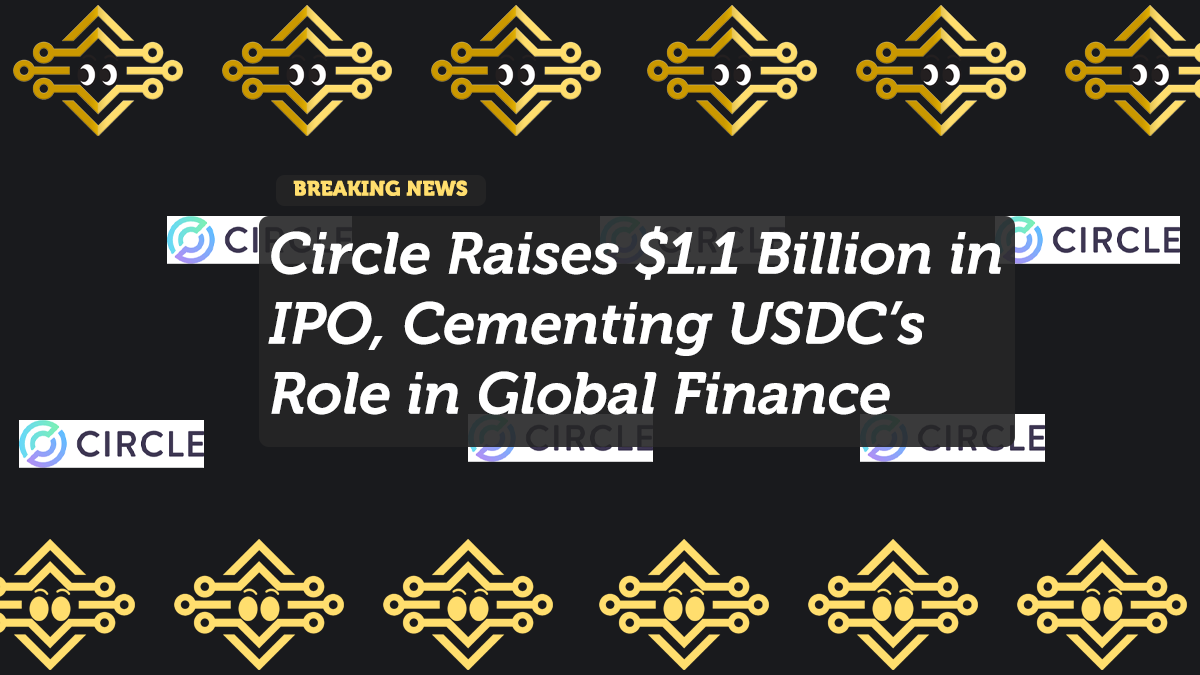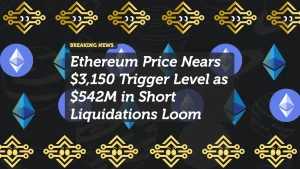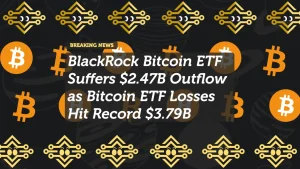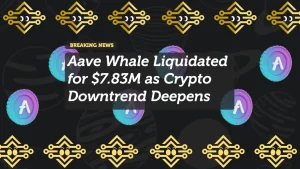
Circle Raises $1.1 Billion in IPO, Cementing USDC’s Role in Global Finance
In one of the most anticipated crypto IPOs of the year, Circle has raised a stunning $1.1 billion — way above its expected $896 million. That’s not just a win for the company behind USDC, the world’s second-largest stablecoin. It’s a seismic statement: regulated crypto assets are officially Wall Street material.
And let’s not gloss over this—Circle’s shares debuted at $31, beating the predicted range of $27–$28. With this momentum, Circle now sits at a $6.9 billion valuation, fully diluted to $8.1 billion. Not bad for a company many thought might not make it to the public markets at all this year.
So… what does this mean for USDC, stablecoins, and the crypto market at large?
Let’s dig in.
IPO Details: A Strong Vote of Confidence
- $1.1B raised vs. $896M projected
- Shares priced at $31, above forecast
- $6.9B market cap ($8.1B fully diluted)
- USDC maintains a solid $60.9B market cap
For context, Circle had to put its IPO plans on ice back in April, citing market jitters linked to policy instability under the Trump administration. Fast forward to June, and Wall Street seems to be singing a different tune — one that hums of regulatory alignment, fiscal optimism, and strategic potential.
USDC’s Strategic Role in the Stablecoin Wars
While Tether (USDT) still dominates the stablecoin market by size, USDC has quietly and consistently carved out a powerful niche. With deep integration into regulated financial rails, a focus on compliance, and partnerships with major institutions, USDC isn’t just a payment token — it’s becoming a proxy for the digital dollar.
- $60.9 billion in circulation
- Backed by U.S. dollar-denominated assets
- Trusted by institutional players and DeFi protocols alike
The fact that USDC has held its ground while others have faltered speaks volumes about Circle’s risk management and regulatory-first approach. And investors have clearly taken notice.
Rejecting Ripple’s Buyout: A Smart Play?
Earlier this year, Ripple reportedly offered $4–$5 billion to acquire Circle. Many speculated Circle might take the deal, especially given the market’s uncertain regulatory backdrop.
But Circle said no thanks. Instead, they bet on independence and market validation via IPO — and that bet paid off.
They now sit at a valuation nearly double Ripple’s offer and maintain control over the future of USDC. If Circle continues this trajectory, USDC could become the de facto dollar-backed digital currency that the U.S. never officially issued (but might unofficially endorse).
Why This IPO Matters (Way Beyond Crypto)
Here’s what Circle’s IPO really signals to the world:
1. Regulated Crypto is Going Mainstream
Wall Street isn’t just tolerating crypto anymore — it’s backing it. Stablecoins, especially those with transparency and compliance baked in, are becoming core financial infrastructure.
2. The U.S. Wants a Seat at the Digital Currency Table
USDC’s success strengthens the U.S. position in the race against the digital yuan, BRICS stablecoins, and other sovereign-backed assets. With Circle acting as a private-sector proxy, the U.S. doesn’t need to issue a central bank digital currency (CBDC) — it already has one in disguise.
3. The GENIUS Act Could Be a Game-Changer
The recently introduced GENIUS Act aims to clarify U.S. stablecoin regulation. If passed, it would give companies like Circle even more room to innovate. With legislative tailwinds and investor demand, Circle is now poised to shape policy as much as policy shapes it.
A Digital Dollar by Any Other Name?
Circle’s IPO wasn’t just a financial event — it was a geopolitical signal.
Let’s not forget that USDC is already being used internationally, from remittances to DeFi to treasury solutions. Now, as the U.S. explores tighter crypto integration into its broader economic strategy, Circle may end up becoming the unofficial engine behind a U.S.-backed stable global currency.
Think of it this way: while Tether’s transparency and compliance have been questioned, Circle’s public listing forces a higher level of accountability, disclosure, and trust — exactly what regulators (and investors) want.
Final Word: Circle’s IPO Is the Beginning, Not the End
Circle has proven that crypto companies can meet Wall Street’s standards without sacrificing their crypto-native DNA. The successful IPO will bring fresh capital, strategic visibility, and a flood of new interest in stablecoin infrastructure.
But here’s the big takeaway:
If crypto is going to scale globally, it needs institutions like Circle to bridge the gap — and they just proved they’re ready for the challenge.
What Comes Next?
- Will other stablecoin issuers follow suit with IPOs or SPACs?
- Could USDC overtake USDT as the stablecoin of choice?
- Will USDC become the preferred digital dollar in U.S. and global trade?
- How will legislation like the GENIUS Act shape stablecoin adoption post-IPO?
Stay tuned. We’ll be watching closely.
















